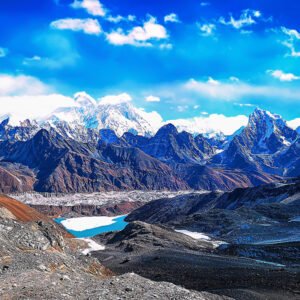
Reclamation of land refers to the process of reclaiming land by either draining water from muddy areas or elevating the land’s elevation. It can be an excellent alternative for establishing regions for construction, agriculture, and other uses given the rising need for land. One of the most important areas of human-induced environmental change is land reclamation. In this context, the environmental effects of converting water bodies into urban land usage are as follows:
- Environmental hazards: Water reclamation for urban land use in the coastal areas may aggravate the incidents of earthquakes etc., due to soil liquefaction and land subsidence.
- Environmental risks: Because of soil liquefaction and land subsidence, water reclamation for urban land use in coastal locations may make earthquakes and other natural disasters more frequent.
- Environmental risks: Land subsidence and soil liquefaction caused by water reclamation for urban land use along coastlines may increase the frequency of earthquakes and other natural disasters.
- Extinction of Species: Wetland reclamation has increased the biochemical oxygen demand (BOD), which is harmful to both aquatic and avian species. The Hussain Sagar Lake is a prime illustration of this.
Extinction of Species: The reclamation of wetland areas has increased the biochemical oxygen demand (BOD), which is detrimental to both aquatic and avian species. An outstanding example of this is the Hussain Sagar Lake.
Hindi Answer
शहरी भूमि उपयोग में जल निकायों के सुधार के पर्यावरणीय प्रभाव क्या हैं?
भूमि का पुनर्ग्रहण भूमि को पुनः प्राप्त करने की प्रक्रिया को या तो मैला क्षेत्रों से पानी की निकासी या भूमि की ऊँचाई को ऊपर उठाने से संदर्भित करता है। भूमि की बढ़ती आवश्यकता को देखते हुए निर्माण, कृषि और अन्य उपयोगों के लिए क्षेत्रों की स्थापना के लिए यह एक उत्कृष्ट विकल्प हो सकता है। मानव-प्रेरित पर्यावरण परिवर्तन के सबसे महत्वपूर्ण क्षेत्रों में से एक भूमि सुधार है। इस संदर्भ में, जल निकायों को शहरी भूमि उपयोग में परिवर्तित करने के पर्यावरणीय प्रभाव इस प्रकार हैं:
- पर्यावरणीय खतरे: तटीय क्षेत्रों में शहरी भूमि उपयोग के लिए जल सुधार से मिट्टी के द्रवीकरण और भूमि के धंसने के कारण भूकंप आदि की घटनाएं बढ़ सकती हैं।
- पर्यावरणीय जोखिम: मिट्टी के द्रवीकरण और भूमि के घटने के कारण, तटीय स्थानों में शहरी भूमि उपयोग के लिए जल सुधार से भूकंप और अन्य प्राकृतिक आपदाएँ अधिक बार हो सकती हैं।
- पर्यावरणीय जोखिम: तटरेखाओं के साथ-साथ शहरी भूमि उपयोग के लिए जल पुनर्ग्रहण के कारण भूमि अवतलन और मृदा द्रवीकरण से भूकंप और अन्य प्राकृतिक आपदाओं की आवृत्ति बढ़ सकती है।
- प्रजातियों का विलुप्त होना: वेटलैंड रिक्लेमेशन ने बायोकेमिकल ऑक्सीजन डिमांड (बीओडी) को बढ़ा दिया है, जो जलीय और एवियन प्रजातियों दोनों के लिए हानिकारक है। हुसैन सागर झील इसका एक प्रमुख उदाहरण है।
प्रजातियों का विलुप्त होना: आर्द्रभूमि क्षेत्रों के सुधार ने जैव रासायनिक ऑक्सीजन की मांग (बीओडी) में वृद्धि की है, जो जलीय और एवियन प्रजातियों दोनों के लिए हानिकारक है। इसका एक उत्कृष्ट उदाहरण हुसैन सागर झील है।



